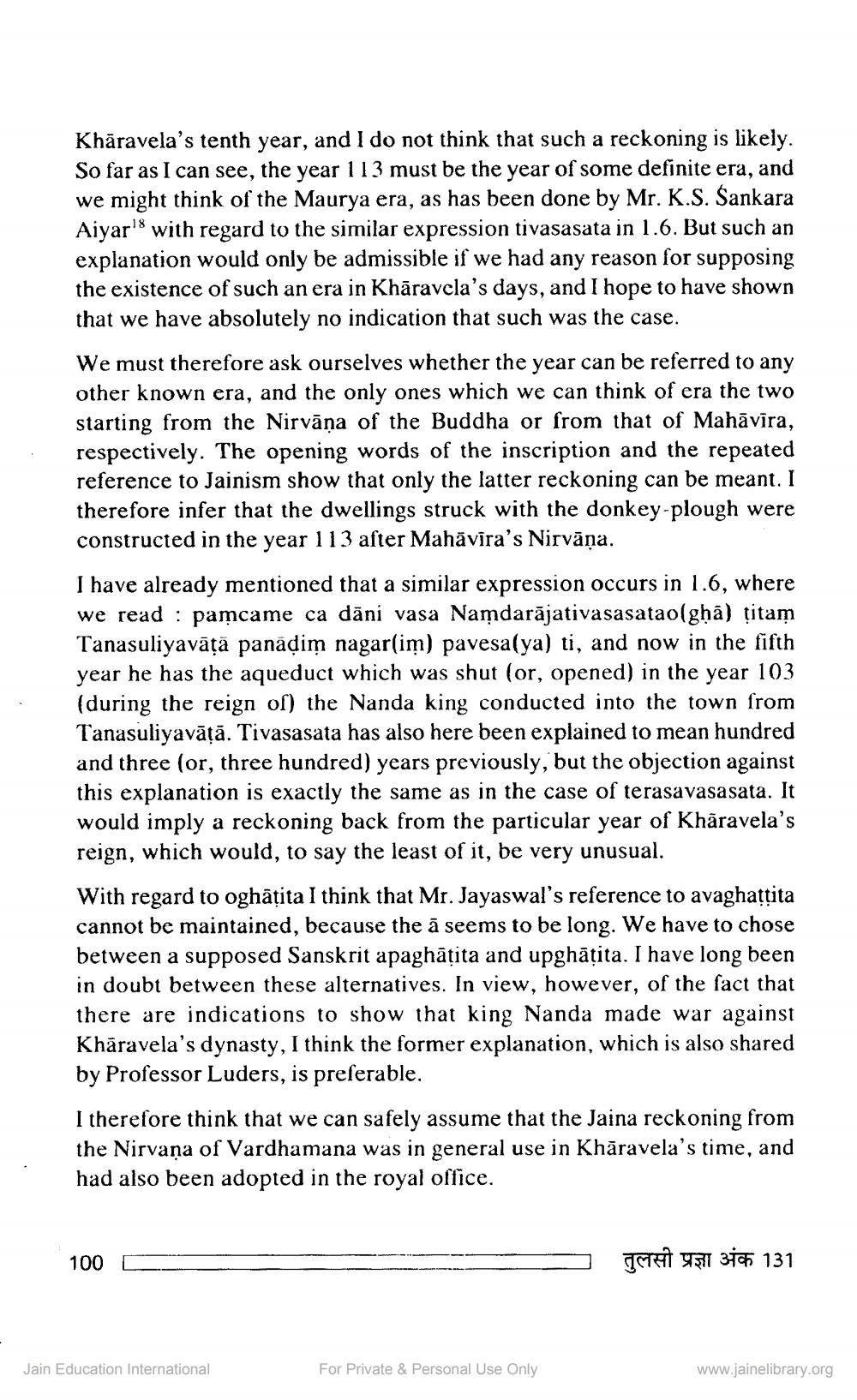________________
Khāravela's tenth year, and I do not think that such a reckoning is likely. So far as I can see, the year 113 must be the year of some definite era, and we might think of the Maurya era, as has been done by Mr. K.S. Sankara Aiyarls with regard to the similar expression tivasasata in 1.6. But such an explanation would only be admissible if we had any reason for supposing the existence of such an era in Khāravela's days, and I hope to have shown that we have absolutely no indication that such was the case. We must therefore ask ourselves whether the year can be referred to any other known era, and the only ones which we can think of era the two starting from the Nirvāṇa of the Buddha or from that of Mahāvīra, respectively. The opening words of the inscription and the repeated reference to Jainism show that only the latter reckoning can be meant. I therefore infer that the dwellings struck with the donkey-plough were constructed in the year 113 after Mahāvīra's Nirvāņa.
I have already mentioned that a similar expression occurs in 1.6, where we read : pamcame ca dāni vasa Namdarājativasasatao gḥā) țitam Tanasuliyavāțä panädim nagar(im) pavesa(ya) ti, and now in the fifth year he has the aqueduct which was shut (or, opened) in the year 103 (during the reign of) the Nanda king conducted into the town from Tanasuliyavāļā. Tivasasata has also here been explained to mean hundred and three (or, three hundred) years previously, but the objection against this explanation is exactly the same as in the case of terasavasasata. It would imply a reckoning back from the particular year of Khāravela's reign, which would, to say the least of it, be very unusual. With regard to oghāțita I think that Mr. Jayaswal's reference to avaghattita cannot be maintained, because the ā seems to be long. We have to chose between a supposed Sanskrit apaghāțita and upghāțita. I have long been in doubt between these alternatives. In view, however, of the fact that there are indications to show that king Nanda made war against Khāravela's dynasty, I think the former explanation, which is also shared by Professor Luders, is preferable.
I therefore think that we can safely assume that the Jaina reckoning from the Nirvana of Vardhamana was in general use in Khāravela's time, and had also been adopted in the royal office.
100 C
-
Tri 9511 31 131
Jain Education International
For Private & Personal Use Only
www.jainelibrary.org




